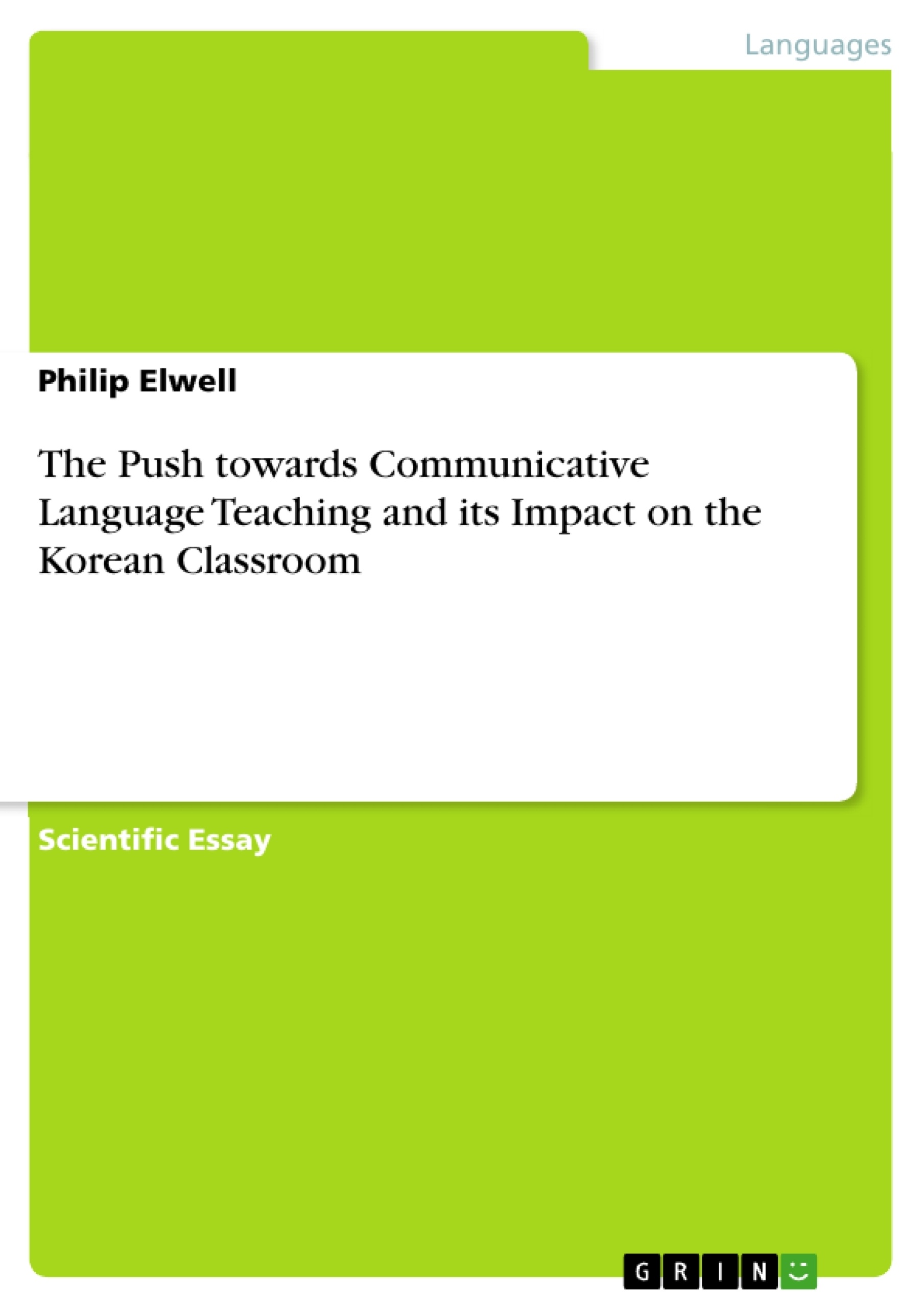This paper will review through the aims of communicative teaching, examining the roles of
both the teacher and the learner as well as the significant traits of the communicative classroom. It
will examine the recent changes in educational policy within Korea looking at its move towards
communicative language teaching and the impact which this has had on the traditional Korean
classroom. It will briefly look at how communicative language teaching and the Korean Confucius
mindset relate. Finally it will examine the difficulties that teachers face when implementing a
communicative approach and the implications that this approach will have.
Inhaltsverzeichnis (Table of Contents)
- Introduction
- Communicative Language Teaching
- Educational Policy Changes and the Korean Traditional Classroom
- Communicative Language Teaching and the Korean Confucius Mindset
- The difficulties of implementing Communicative Language Teaching
Zielsetzung und Themenschwerpunkte (Objectives and Key Themes)
This paper analyzes the shift towards communicative language teaching (CLT) in Korean classrooms, examining its impact on traditional teaching methods and student learning. It aims to understand the factors that have influenced this shift, including educational policy changes, cultural perspectives, and the inherent challenges of implementing CLT in a Confucian-influenced educational context.
- The rise of Communicative Language Teaching (CLT) as a response to traditional grammar-focused methods
- The influence of educational policy changes in Korea on the shift towards CLT
- The impact of the Korean Confucius mindset on the adoption and implementation of CLT
- The challenges faced by teachers in implementing CLT in Korean classrooms
- The potential implications of CLT for the development of communicative competence in Korean students
Zusammenfassung der Kapitel (Chapter Summaries)
The introduction of this paper sets the context for the discussion, outlining the global rise of English as a global language and its impact on educational policies in countries like Korea. It emphasizes the shift towards communicative competence in English and the corresponding need for changes in teaching methodology.
The chapter on communicative language teaching (CLT) delves into the origins and principles of this approach, highlighting its focus on communication and real-life language use. It examines the shift in roles for both teachers and learners in a CLT environment, emphasizing the learner as a negotiator and the teacher as a facilitator. The chapter also explores the characteristics of the communicative classroom, emphasizing the importance of creating a secure and interactive learning environment.
The chapter on educational policy changes in Korea and the traditional classroom examines the historical context of English education in Korea, focusing on the “Grammar-Translation Approach” that dominated prior to the 1990s. It analyzes the shift in policy that led to the introduction of CLT, outlining the rationale behind this change and the impact on curriculum and teaching methods.
The chapter on communicative language teaching and the Korean Confucius mindset explores the relationship between CLT and the Confucian educational tradition in Korea. It highlights the potential challenges posed by Confucian principles in the implementation of CLT, suggesting a need for careful consideration of cultural context when adopting Western pedagogical approaches.
Schlüsselwörter (Keywords)
This paper focuses on the key concepts of Communicative Language Teaching (CLT), English as a Global Language, Korean Education Policy, Confucian Mindset, Traditional Classroom, and Communicative Competence. The paper examines the interaction between these concepts, analyzing the challenges and potential benefits of implementing CLT in a Korean context.
- Quote paper
- Philip Elwell (Author), 2011, The Push towards Communicative Language Teaching and its Impact on the Korean Classroom, Munich, GRIN Verlag, https://www.grin.com/document/182284



